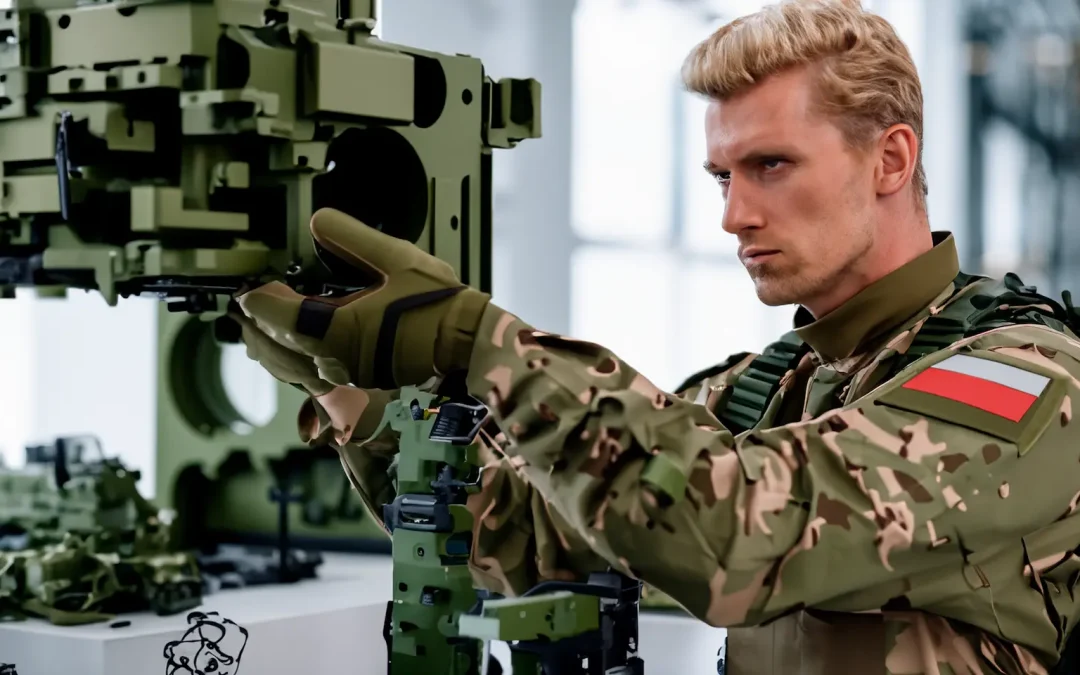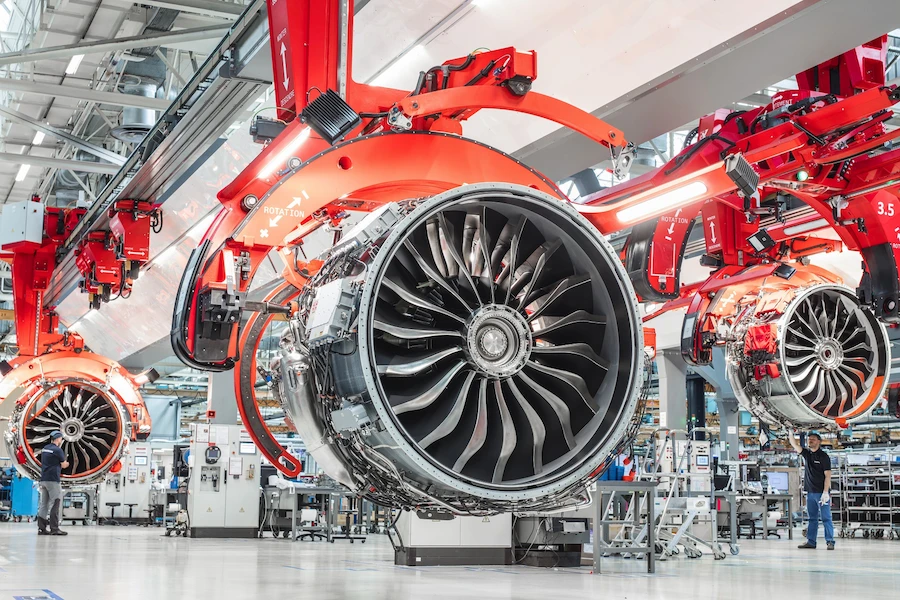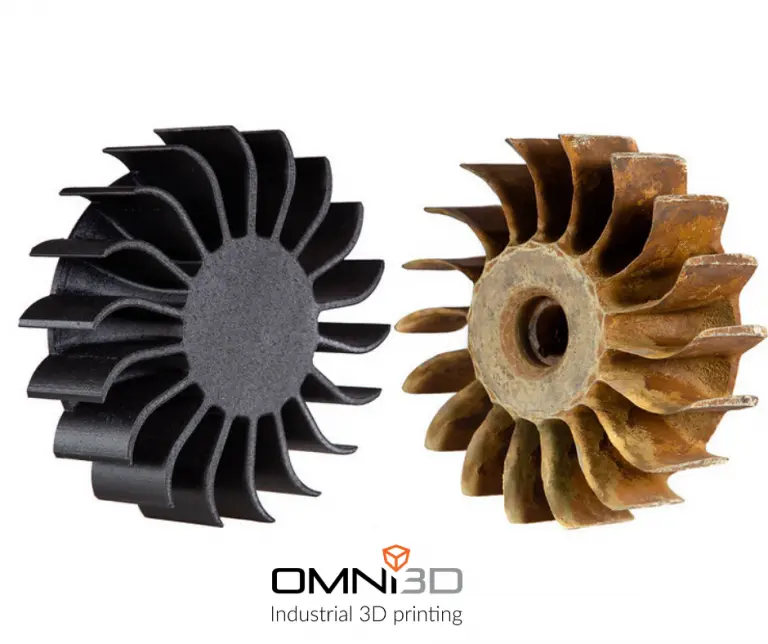


Large-Format, Heated Chambers: The Cornerstone of Defense-Grade 3D Printing
Reliability and performance are paramount in defense and 3D printing has emerged as a transformative technology. The successful implementation of this technology hinges on several critical factors, with chamber size and temperature control standing out as particularly...
Soaring to New Heights: Material Extrusion takes Flight in Aerospace Applications
Building upon our commitment to safety-first innovation in regulated markets, Omni3D’s industrial extrusion 3D printing technology is taking flight in the demanding world of aerospace. This blog entry, a continuation of our exploration of 3D printing within...
Refurbishment of a vacuum pump using 3D printing technology
Luk-Plast, a plastics recycling company, commissioned us to print an impeller for a vacuum pump in a process line where waste plastic film is recycled into pellets. Our job was to design the impeller to effectively replace the existing brass component, both on a...
Industrial 3D printing – an unequal battle with desktop printers
In the FDM / FFF technology there is a belief that anyone who can print anything more than PLA, can be treated as a solution for the engineer and industry. What is professional, industrial 3D printing? Where is the line that mark a border between the printers for amateurs, semi-professional and the industry printers for engineers and production? Why, despite many years of existence of 3D printing, the knowledge related to it, is not common? I will try to define the line between, explain the aspects, both technological and usable that is associated with professional 3D printing. That needs to be done, to know what it is, what it gives and makes it different from desktop and semi-professional devices.

BioElectroCathode project – biofuels thanks to 3D printer
BioElectroCathode is an innovative project that aims to apply 3D printing technology to the production of electrochemical bioreactors. Together with Scientists – Omni3D’ team is involved in developing the way to produce cathodes necessary for the bioelectrosynthesis process. The solution is to find a way to convert CO2 from exhaust and the air into biogas that can be used as a fuel. How 3D printing technology from Omni3D can help in production of “the fuels of the future”?

